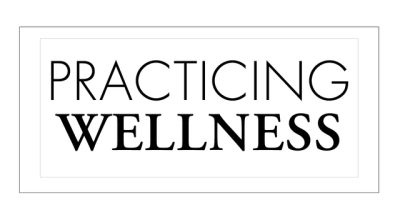
The word “hypocrite” is wonderfully complex. Rarely spoken calmly or quietly, many of us are filled with a sense of triumphant moral superiority when we have occasion to use it and experience a unique discomfort whenever we happen to be the target of the term. Even when the transgression itself is relatively benign, an accusation of hypocrisy often remains shaded by malice. With the understanding that holding ideals and failing to live up to them is universal to the human condition, why is it that a word used to describe incongruence between thoughts and actions inspires such intense emotional reactions?
Today’s news media may not know the answer, but they certainly leverage it to drive online traffic in their direction to great effect. Search for the word “hypocrite” on any news site across the political spectrum and without fail you’ll find an article from the past month with it in the headline. The reaction they’re hoping for is as follows: you see the word, feel the suspense, click the article (maybe even read it), feel the satisfaction, and you keep coming back for more. Eventually, you associate that satisfaction with the emotional language, regardless of the content. Dog, meet Pavlov.1
These complex feelings, particularly surrounding the subject of hypocrisy, are the result of a phenomenon known as cognitive dissonance.2 As human beings, we expect alignment between the principles we value and the actions we take. When they aren’t, we become increasingly uncomfortable until we change either the principle or the behavior. This is why accusations of hypocrisy are so powerful — regardless of whether or not they are true, they imply that something is out of alignment. It’s often easier to forgo even entertaining the idea than to seriously question whether our thoughts and actions match because we understand subconsciously that if they aren’t, it’s going to require change — and change is hard.3 But because I know that the Venn diagram of “Lawyers who read Practicing Wellness” and “Lawyers open to change” is nearly a perfect circle, the idea that we can wield cognitive dissonance as a weapon for personal growth is worth exploring.
To do so fairly requires a crash course on the relationship between thoughts, feelings, and actions. While psychiatrist Aaron Beck receives credit for bringing this concept to the field of modern psychology,4 the general principles have been recognized for nearly two millennia by distinct cultural philosophies such as Greek stoicism,5 Islamic psychology,6 and Buddhism.7 For our purposes, we’ll stick with Beck’s framework in which thoughts are influenced by our beliefs about ourselves, others, and the future. Feelings are shaped by thoughts. Behaviors are informed by feelings and also reinforce thoughts (creating a neat little feedback loop) based on external reactions to the behavior. Sometimes the progression from thought to feeling to action happens so fast they’re indistinguishable from one another. It’s important to know when you can prevent the train from leaving the station, and when it risks becoming a runaway.
We have direct, conscious control over two of these areas: thoughts and behaviors. Feelings are trickier, which is a good thing — if we could all will ourselves to be happy and healthy forever, I’d be out of a job. Conveniently, cognitive dissonance addresses only our thoughts and actions. Theoretically, there are two ways to go about this: developing a new behavior that feels insincere in order to combat problematic thinking or updating your belief system in order to create new, healthier behaviors. As a hypothetical example, let’s say fictional litigator Jennifer Walters develops a skin condition that affects her self-esteem to the point where she begins to feel shame about being seen and scales back public appearances. Working with her therapist, she develops a plan to engage in shame-attacking exercises in public in order to challenge the belief that being judged by others is intolerable for her. This creates cognitive dissonance, as her actions imply that the opinions of others are irrelevant to her.
We might also look at the hypothetical case of fictional district attorney Harvey Dent, who presents to his therapist with what he describes as “breathtaking anger management issues.” After convincing Harvey that anger itself is just a feeling and the behavioral outbursts are the real problem, the therapist suggests that Harvey incorporate a short meditation into his daily routine during which he repeats to himself internally, “I am a peaceful, nonviolent man.” Logically, Harvey knows he’s lying to himself. He then thinks about a close friend who possesses a diplomatic nature that he admires (he also happens to be a genius billionaire playboy philanthropist) and decides to try to emulate his friend’s behavior. Internally, he knows his behavior is totally insincere but, over time, this personal belief that, “I have a violent temper and am just faking good” continues to clash with his behavior, which incidentally has created opportunities for him to receive positive reinforcement.
One final (important) note: Your mind is capable of incredible gymnastics when it comes to maintaining stasis. When a conscious behavior change is made to help modify problematic thinking, it’s an example of cognitive dissonance used right. Too often though, our instinct is to try to have our cake and eat it by using tricks like justification, denial, and ignoring reality. When a person convicted of a crime makes a statement along the lines of, “The victim was asking for it,” it’s really an attempt to alleviate their own cognitive dissonance by justifying their objectively poor behavior to fit with their positive image of themselves. Be wary of falling into that trap. A properly licensed and credentialed therapist can help immensely in identifying problematic thought patterns and harmful behaviors and play a key role in developing a plan to eliminate threats to mental health. The SBM Lawyers and Judges Assistance Program can help you find such a person in addition to offering other resources for attorneys interested in improving their overall well-being.